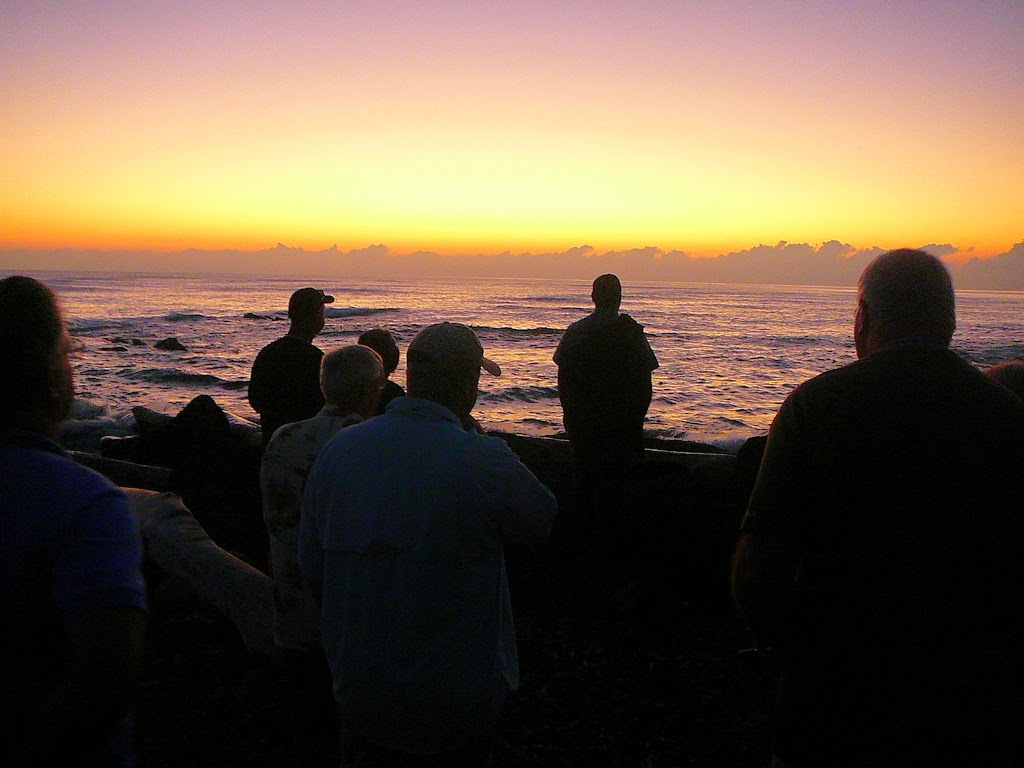So I'm sure everyone remembers that song, but this was my first trip there to Monterey, California. As the entertainment part of the Western Summit conference, we visited the world famous Monterey Bay Aquarium on Tuesday evening.
Here we gather in the lobby. We had the place to ourselves...well except for the fish I mean. We had a "strolling dinner" which was perfect for visiting and looking at all of the exhibits.
Here is probably the center attraction: The Kelp Forest. It has kelp of course, but also a myriad of ocean fish. The orange and black (nice colors) fish in the first picture, a Pacific Sheephead for those keeping track, was in the "forest." The structure is around 30 feet tall and contains 325,000 gallons of water. The kelp grows four inches a day. Do you see that silvery mass of smaller fish in the center? Those are anchovies and they never stop their coordinated movement through the water.
Well here is a round aquarium full of anchovies, and they too never stopped swimming. Tonight they were all going counter-clockwise. If one just happened to turn a little and try the other way, the others quickly got him (or most likely her) going back the right way. They say there is food in there as they keep trolling with their big mouths open. Very interesting display. I wonder if they ever stop to rest. Glad I'm not an anchovy, for a lot of reasons.
Probably everyone has seen a live or picture of an octopus. But I had never seen a big one like this stuck to the glass. I would not one wrapped around my leg, for sure.
Here is Dale trying to feed one of the fish. Fortunately it was some meatballs and not fish. That would be so wrong.
I had read the book Cannery Row by John Steinbeck many years ago. But I had forgotten that it took place here in Monterey. The canning industry was huge here in the early 1900's, peaking during World War I where canned sardines were a staple sent to troops in Europe. As shown in this part of the museum, it was grueling work for the mostly female work force. Long hours on your feet cutting and packing cold smelly fish...it was a different time. Here Troy goes back in time to live in the factory...for a second. Due to over fishing, the once thriving packing industry had largely collapsed there by the 1950's. But it is still a popular tourist attraction of restaurants and shops on the wharf.
At one point during the evening, our CEO Troy addressed the group in front of the Kelp Forest. He talked about some of the history of AgroLiquid and how we came to be today, and the plans for the future as a family owned business. Not unlike many of the businesses of our retail partners here. These are challenging times, primarily due to the persistent drought. But we will work together to keep the crops fed so that the people can be fed.
Then it was back to looking around at the many exhibits. They are so cleans and pretty to see.
That's a Lionfish swimming on the right.
And these are eels sticking their heads out of those holes in the rock.
Those little orange and white fish are Clownfish.
They had a shallow pool of Batfish, which are a type of ray. They let visitors feed them small chunks of fish at feeding time. Well who wouldn't want to do that? They are harmless after all....
Hey!!! Give me back my fingers!!! I thought they were harmless!!! (Relax readers, I'm just being a Clownfish myself.)
I think that maybe I'm dreamin'.




















































